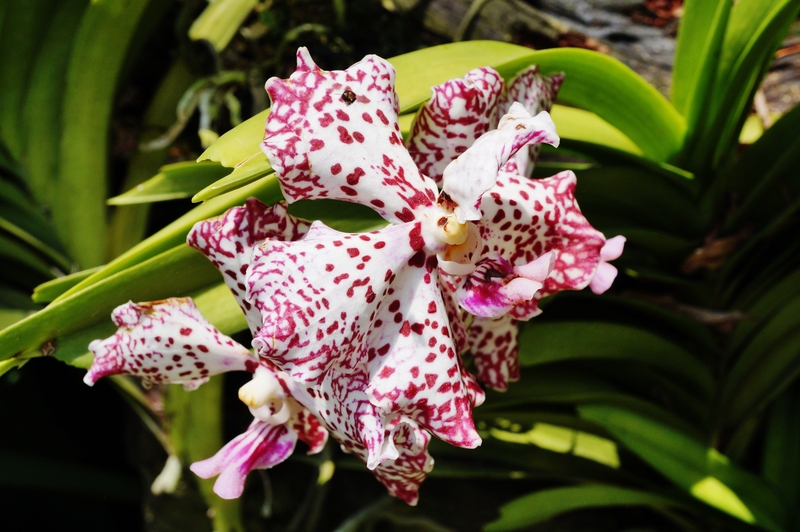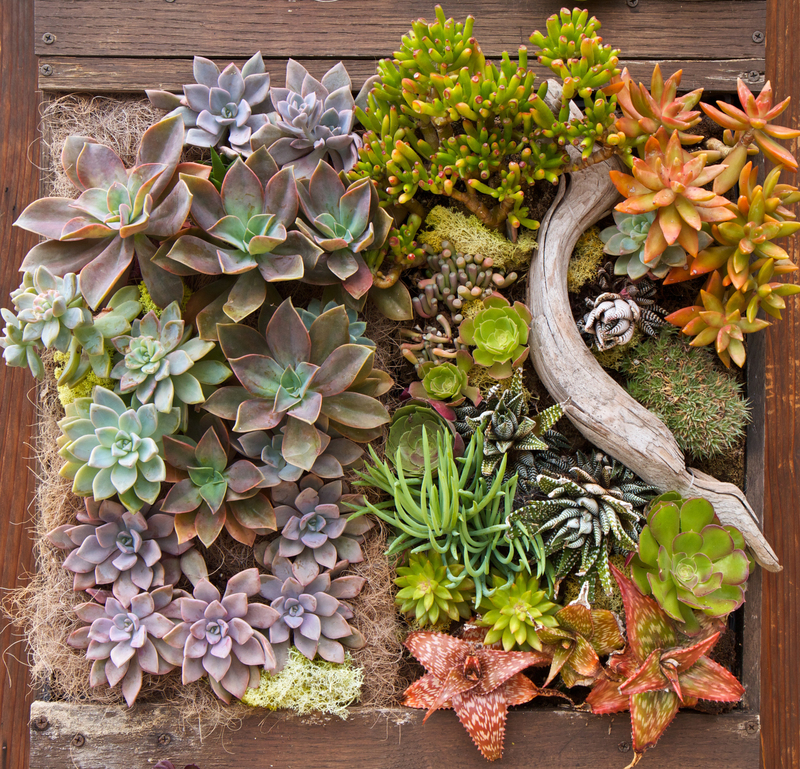10 Evergreen Trees That Stay Manageable for Small Landscapes
Evergreen trees can add year-round color, structure, and privacy to any garden. However, not all evergreens are suited to limited spaces. Luckily, a variety of compact evergreen trees exist that offer beauty and practical benefits without exceeding the boundaries of petite yards and suburban gardens. In this comprehensive guide, we'll explore 10 evergreen trees that remain manageable for small landscapes. Discover their aesthetic qualities, growing habits, and maintenance tips so you can select the right evergreen for your space!

Why Choose Compact Evergreens for Small Spaces?
Small-space gardeners often worry that evergreen trees will quickly outgrow their plots, overshadowing other plants or causing property issues. Thankfully, certain evergreen varieties stay compact, neat, and tidy, making them ideal for patios, courtyards, and smaller yards. These trees offer several advantages:
- Year-round visual interest: Their persistent foliage keeps your landscape attractive even in winter.
- Screening and privacy: They serve as natural privacy screens without overwhelming the space.
- Wildlife support: Compact evergreens provide safe habitats and food for birds and pollinators.
- Easy maintenance: Smaller trees generally require less pruning and care.
Top 10 Manageable Evergreen Trees for Small Gardens
The following evergreens are excellent choices for areas where space is at a premium. All are highly valued for their slow to moderate growth rates, compact habits, and resilience.
1. Dwarf Alberta Spruce (Picea glauca 'Conica')
The Dwarf Alberta Spruce is an iconic compact evergreen tree, prized for its dense, conical form and rich green needles. Slow-growing--typically reaching 6-8 feet tall in many years--this spruce rarely needs pruning and remains narrow, making it superb for entryways, foundation plantings, or container gardens.
- Height: 6-8 feet (after many years), 2-4 feet wide
- Best for: Formal gardens, accent plantings, topiary
- Light: Full sun to partial shade
- USDA Zones: 2-8
2. Japanese Holly (Ilex crenata)
Japanese Holly is a versatile evergreen tree that mimics the appearance of boxwood with its small, glossy leaves. Varieties like 'Sky Pencil' are especially suited for smaller landscapes, sporting upright, columnar habits that make a striking accent or hedge in narrow areas.
- Height: 4-10 feet, 2-3 feet wide ('Sky Pencil')
- Best for: Hedges, screens, containers
- Light: Full sun to partial shade
- USDA Zones: 5-8
3. Hinoki Cypress (Chamaecyparis obtusa)
This Japanese native offers gracefully layered branches and rich, dark-green foliage. Dwarf selections such as 'Nana Gracilis' keep the mature size manageable--often under 6 feet tall.
- Height: 3-6 feet (dwarf cultivars), 3-5 feet wide
- Best for: Focal points, Asian-inspired gardens, rockeries
- Light: Full sun to partial shade
- USDA Zones: 4-8
4. Korean Fir (Abies koreana)
If you're searching for an unusual yet manageable evergreen tree, consider the Korean Fir. This fir stays compact, develops an attractive pyramidal shape, and displays stunning purple-blue cones even on young trees.
- Height: 15-30 feet, but slow to mature; can be kept smaller with pruning
- Best for: Ornamental accents, small lawns
- Light: Full sun
- USDA Zones: 5-7
5. Eastern Redbud 'Forest Pansy' (Cercis canadensis 'Forest Pansy')
While technically a deciduous tree, the Eastern Redbud deserves an honorary spot due to its bold foliage, vibrant pink flowers in spring, and manageable size. In warmer regions, it sometimes retains a portion of its leaves, offering extended seasonal interest.
- Height: 15-20 feet
- Best for: Specimen planting, mixed borders
- Light: Full sun to partial shade
- USDA Zones: 5-9
6. Bay Laurel (Laurus nobilis)
The aromatic Bay Laurel is an attractive evergreen tree frequently shaped into small trees, standards, or topiaries. Its glossy, deep green leaves serve the dual purpose of culinary uses and ornamental charm.
- Height: 5-12 feet (easy to keep smaller by pruning)
- Best for: Containers, patios, herb gardens
- Light: Full sun to partial shade
- USDA Zones: 8-10 (can be overwintered indoors in colder climates)
7. Little Gem Magnolia (Magnolia grandiflora 'Little Gem')
A small evergreen tree that packs a punch, the Little Gem Magnolia produces sumptuous white flowers and lustrous green leaves with rusty undersides. This compact cultivar matures at around 20 feet tall, far smaller than the typical Southern Magnolia.
- Height: 15-20 feet, 7-10 feet wide
- Best for: Accent trees, fragrant gardens
- Light: Full sun to light shade
- USDA Zones: 7-9
8. Italian Cypress 'Tiny Tower' (Cupressus sempervirens 'Tiny Tower')
The classic Italian Cypress often grows tall and statuesque, but the 'Tiny Tower' cultivar remains slender and short--perfect for accentuating entranceways or lining a path without intruding on space.
- Height: 10-12 feet, 3-4 feet wide
- Best for: Vertical accents, formal gardens, container planting
- Light: Full sun
- USDA Zones: 7-11
9. Japanese Yew (Taxus cuspidata)
Extremely versatile and shade-tolerant, Japanese Yews thrive in urban and suburban gardens. Dwarf varieties like 'Nana' maintain a dense, compact form and can be clipped to shape, making them suitable for hedges or individual specimens.
- Height: 3-6 feet (dwarf forms), 3-6 feet wide
- Best for: Low hedges, foundation plantings
- Light: Full sun to deep shade
- USDA Zones: 4-7
10. Arborvitae 'Emerald Green' (Thuja occidentalis 'Smaragd')
Arborvitae 'Emerald Green' is one of the most popular compact evergreen trees for privacy screens and small yards. Its upright, narrow growth habit saves precious garden real estate while providing dense, year-round foliage.
- Height: 10-15 feet, 3-4 feet wide
- Best for: Living fences, accent trees, screens
- Light: Full sun to partial shade
- USDA Zones: 3-8
Factors to Consider When Selecting Small Evergreen Trees
Choosing the right evergreen trees for your compact landscape requires more than just selecting the smallest varieties. Consider the following key points to ensure a successful, long-lasting addition to your garden:
- Mature Size: Always check the expected height and width. Even compact varieties can spread if not pruned as needed.
- Growth Rate: Slow-growing trees often need less maintenance and intervention compared to rapid growers.
- Light Requirements: Match your tree to your site's sunlight exposure; some manage partial shade, while others demand full sun.
- Climate and Hardiness: Check the USDA hardiness zone for your chosen tree--this ensures winter survival and robust growth.
- Purpose: Decide whether the evergreen is for screening, a focal point, wildlife support, or ornamental value.
- Soil Preferences: Some evergreens need well-drained, acidic soil, while others thrive in more varied conditions.
Caring for Compact Evergreen Trees in Small Yards
Proper maintenance is vital to keeping your small evergreen trees manageable and healthy. Here are essential care tips:
- Watering: While young or newly-planted, ensure consistent moisture. Once established, most evergreens are reasonably drought-tolerant.
- Mulching: Add a layer of organic mulch to maintain soil moisture and temperature while reducing weeds.
- Pruning: Prune lightly, if needed, after new growth emerges each spring. Avoid heavy pruning in late summer or fall, as this can trigger tender new growth before winter.
- Fertilizing: Feed compact evergreens with a slow-release, balanced fertilizer in spring if your soil is deficient.
- Protection: Some evergreens benefit from winter wind protection--consider burlap wraps or windbreaks in exposed areas.

Creative Landscape Uses for Dwarf and Compact Evergreens
These manageable evergreen trees for small spaces are not only practical but highly versatile in the garden. Here are a few creative ways to use them:
- Container Gardens: Many compact evergreens thrive in pots, perfect for patios or balcony gardens.
- Mixed Borders: Use as long-lasting anchors among annuals and deciduous shrubs for winter interest.
- Living Sculptures: Shape columnar or spherical specimens into topiaries for formal appeal.
- Privacy Screens: Closely plant narrow varieties such as 'Sky Pencil' holly for natural fences.
- Culinary Gardens: Bay Laurel doubles as both an ornamental and edible feature.
Final Thoughts: Evergreen Trees for Small Landscapes
Choosing the right evergreen tree for a small space enhances your garden's value and enjoyment throughout the year. With so many compact evergreen tree selections available, it's easy to add lushness and color without overwhelming your landscape. Remember to plant with mature size in mind, provide appropriate care, and enjoy the versatile beauty these manageable trees bring to your home garden!
Looking for more inspiration? Visit your local nursery to see specimen plants in person and consult with experts on the best evergreen trees for small landscapes in your area. With the right choices, even the tiniest garden can enjoy the enduring elegance and function of evergreen trees!